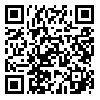BibTeX | RIS | EndNote | Medlars | ProCite | Reference Manager | RefWorks
Send citation to:
URL: http://jdisabilstud.org/article-1-2817-en.html
2- Associate Professor of Communication Studies of Faculty of Culture and Communication- Soure University, Tehran, Iran
3- Assistant Professor of Communication Sciences and Journalism Department, Islamic Azad University, Tehran Central Branch, Tehran, Iran
Abstract
Background & Objectives: Nowadays, social media has gained a crucial role in human life. Creating social branding stands out as one of the main concerns of people with disabilities. The media, especially social media, must assume different responsibilities towards people with disabilities. Informing, educating, and entertaining people with disabilities, as well as informing other sections of society about the low quality of life of people with disabilities, are among the most important missions of any media. Social networks have contributed to the integration of people with disabilities in society. Access to social networks has become easy for the public in recent decades. Therefore, it seems logical to investigate the role of social media in improving and promoting the individual and social life conditions of people with disabilities. This research aims to examine the way of representation of people with disabilities in social networks in improving their living conditions.
Methods: The research method was qualitative, and the main research tool was the in–depth and semi–structured interview. Iranian media elites were targeted for interviews. In this research, media elites are defined as persons with at least 10 years of experience in this field or who have a master's degree and higher university studies with fewer experiences. Eleven experts were selected for the interview. We used the triangulation technique and the "labeling" theory to validate the research. Triple coding (category, subcategory, code) was used to analyze the content of in–depth and semi–structured interviews.
Results: The findings of this research uncovered 3 categories and 6 subcategories: the category of identifying and classifying the needs of disabled people (with the subcategories of public information, using social networks to share and reflect the activities of people with disabilities), improving the level of social communication of people with disabilities through virtual space (with the subcategories of teaching people with disabilities and society to create positive mutual interaction, and developing communication between people with disabilities and other people) and creating social branding (with the subcategories of creating a group in virtual space by people with disabilities and creating a channel in virtual space by people with disabilities).
Conclusion: According to the results of the research, the use of virtual space, especially social networks, can improve the social level of the lives of people with disabilities.
| Rights and permissions | |
 |
This work is licensed under a Creative Commons Attribution-NonCommercial 4.0 International License. |



